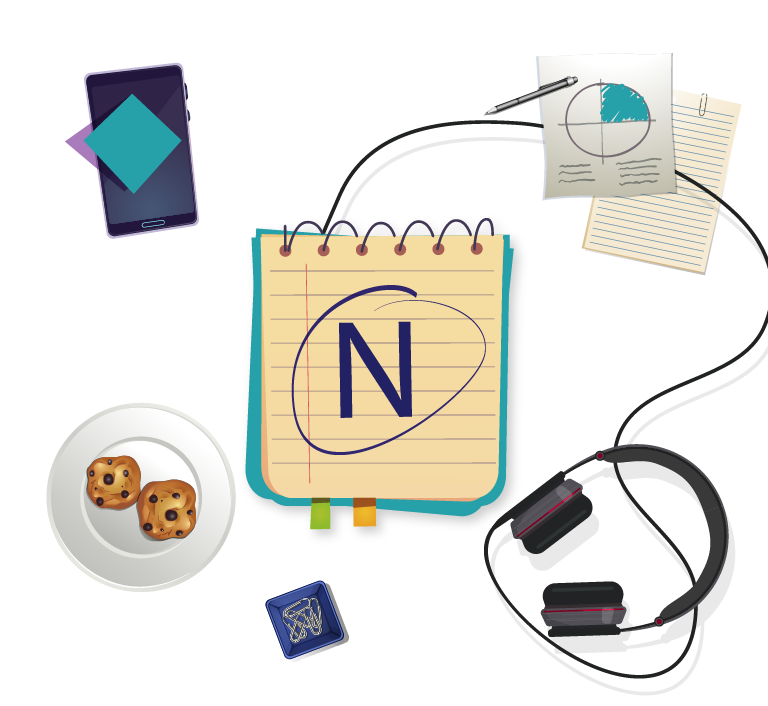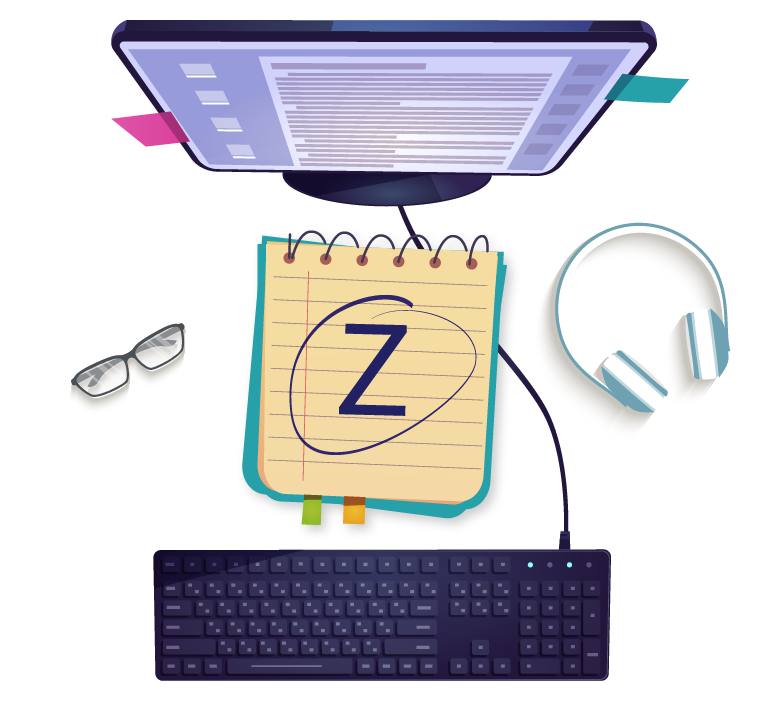Welcome, tech-savvy students! Are you ready to dive into the amazing world of technology and its ever-evolving language? Get ready for an A-to-Z must-know tech terms guide with at least five crucial terms for each alphabet letter. This comprehensive article will help you stay ahead of the curve and ensure that no technical jargon leaves you scratching your head again. So, prepare your neurons for an exciting knowledge boost and start reading!

Antivirus: Software explicitly designed to protect users from computer viruses by detecting and destroying them.
Algorithm: A set of rules that computers must follow during calculations or other problem-solving operations.
API (Application Programming Interface): A combination of protocols, tools, and definitions that allow different software applications to communicate with each other.
AI (Artificial Intelligence): The simulation of intelligence processes observed in humans by machines, especially computer systems. It’s the ability of machines or software to perform intelligent tasks, such as learning, reasoning, decision-making, or problem-solving.
Agile: A methodology used in software development that focuses on taking iterative and incremental steps to complete a project. It also includes collaboration and adaptability.
Automation: The use of technology (software, rules, triggers, and actions) to perform manual tasks without human intervention.
Big Data: Vast and diverse data sets used in machine learning and other advanced analytics to reveal patterns, trends, and associations.
Blockchain: A decentralized and distributed digital ledger. Its purpose is to record transactions securely across multiple computers.
Back-end: The part of a software system that users do not directly access; it includes the server, database, and applications that work behind the scenes.
BIOS (Basic Input/Output System): A specific firmware that is used to initialize hardware during the booting process.
Bot (Robot): An autonomous program on a network, especially the internet, that can interact with systems or users.


Cache: Temporary files downloaded on your computer that are used for web content. These files are being reloaded when you revisit a webpage.
Cloud Computing: The delivery of computing services over the internet. This process includes servers, storage, databases, networking, software, analytics, etc.
Corrupted: Any type of data that has been damaged and becomes unusable, unreadable, or simply inaccessible to a user or application.
Cybersecurity: Techniques and practices designed to protect systems, personal or professional data, and networks from cyberattacks and unauthorized access.
CSS (Cascading Style Sheets): A style sheet language that enables you to create websites written in a markup language like HTML or XML.
Data Mining: The process of extracting and analyzing massive groups of data to discover patterns and useful information that can lead to better decisions or be used to make predictions.
DevOps (Development and Operations): A set of practices that combines software development (Dev) with IT operations (Ops) to shorten and speed up the system development life cycle and provide high software quality.
DNS (Domain Name System): A robust system that transforms all domain names into IP addresses on the internet.
Debugger: A tool used by programmers to test and examine running programs. It is used to detect potential errors or issues with the program.
Data Science: An interdisciplinary field that uses specific scientific methods, such as algorithms, processes, and systems to gain information and insights from both structured and unstructured data.


Encryption: The process of converting data into unreadable code to prevent unauthorized access and to protect it from prying eyes.
Ethical Hacking: The practice of testing computer systems, networks, or applications for vulnerabilities to strengthen security.
Edge Computing: The process in which instead of relying on a centralized cloud-based system, the data is processed near the source of data generation.
Event-Driven: A programming paradigm where the program’s flow is determined by user actions, sensor outputs, or messages from other programs.
EXE: EXE is short for “executable,” and it contains executable programs for Windows that enable software to be installed on a computer.
Firewall: A network security system that monitors real-time and has full control over incoming and outgoing network traffic based on predetermined security rules.
Front-end: The area of a software system that users interact with directly. It includes the user interface and design elements.
Firmware: Software that is permanently programmed into a hardware device, enabling low-level control for that specific device.
FTP (File Transfer Protocol): A standard network protocol used to transfer files between a server on a computer network and a client.
Full-stack: It refers to developers knowledgeable in web development and working with both front-end and back-end technologies.


GUI (Graphical User Interface): A visual way of interacting with electronic devices using graphical icons and visual indicators.
Git (Version Control System): Used in software development as a distributed version control system for tracking all changes made in the source code.
Google Analytics: A web analytics service designed to track and report website traffic, most often used in analyzing data for better future performance.
Graphics Processing Unit (GPU): A specialized electronic circuit designed to speed up computer graphics and image processing.
Gigabyte: A unit of digital information storage capacity. One gigabyte equals one thousand million bytes.
HTML (Hypertext Markup Language): Developers use HTML to create websites and web applications. It’s a standard markup language.
HTTP (Hypertext Transfer Protocol): This is a standardized protocol used for transmitting data over the internet.
Hardware: All the physical components that make a computer system.
Hackathon: An event where programmers, designers, and others collaborate intensively on software projects.
Hadoop: An open-source framework used for distributed storage and processing of large data sets. It is most often used in problem-solving based on large data from a network of many computers.


IoT (Internet of Things): The combination a.k.a. the network of interconnected devices with built-in with software, sensors, and other technologies for exchanging data.
IT (Information Technology): A term for the use of computers, storage, networking, and other devices to create, process, store, secure, and exchange data and information.
IDE (Integrated Development Environment): A software application that provides in-depth facilities to computer programmers for software development, such as a debugger, source code editor, and building automation tools.
Interface: The point of communication where two systems, such as users, hardware devices, or software programs, interact.
IP Address (Internet Protocol Address): Each device connected to a computer network gets assigned a numerical label, also known as an IP address.
JavaScript: A programming language that enables the existence of interactive web pages and is commonly used for front-end development.
JSON (JavaScript Object Notation): A language-independent data format for data interchange that uses human-readable text to store and transmit data objects between a server and a web application.
JUnit (Java Unit Testing Framework): A popular unit testing framework for Java programming language.
JVM (Java Virtual Machine): An abstract machine that enables a computer to run Java programs or other languages that can run in a Java environment.
JDBC (Java Database Connectivity): An API for Java to access databases, allowing Java programs to interact and communicate with databases.


Key Logger: Key logging, also known as keystroke logging, is either hardware or malware that records the keystrokes as they are pressed, and then sends the information to whoever installed the software. This monitoring system can be legal or illegal.
Keyword: Most often a word or phrase is used in a search query to retrieve information from a database or search engine.
Kernel: The base component of an operating system that manages system resources. It serves as a bridge between data processing on a hardware level and a software level.
Kubernetes: An open-source system designed for automating containerized application deployment, scaling, and management.
Kotlin (Programming Language): A modern programming language that is compatible with Java and is used for developing Android applications. It was released in 2016.
LAN (Local Area Network): A specific network that connects devices and computers in a limited geographical area.
Machine Learning: A subset of AI that gives systems the ability to learn and improve from experience without being programmed for those specific activities.
Linux: An open-source and free operating system built upon the Linux Kernel. It is stable, efficient, flexible, and quite customizable.
Library: A collection of non-volatile resources used by programs, most often for software development.
Load Balancing: The process of distributing computational workloads across multiple computers or servers to ensure efficient use of resources.


Metadata: Data that provides information about other data, such as content, format, and structure, to help with organizing, searching, and understanding.
Mobile App Development: The specific process of building applications for all mobile devices such as smartphones and tablets.
Mainframe: A large, high-performance computer used for bulk data processing. Since it has large amounts of memory and data processors, it can process billions of calculations and transactions in real-time.
Malware: Software designed to harm, disrupt, or gain unauthorized access to computer systems. Malware can take on many forms – viruses, trojans, worms, ransomware, spyware, and adware.
Microsoft Azure: A leading cloud computing provider that provides access, management and development of services and applications through global data centers.
Networking: The practice of connecting devices or computers to share resources and information.
Node.js: An open-source, cross-platform JavaScript runtime environment designed to execute JavaScript code outside a web browser.
NAT (Network Address Translation): A process in which one or more local IP addresses are connected to one or more global IP addresses and the other way around.
Namespace: A set of symbols (names) used to organize objects of various kinds and to identify and refer to the correct ones seamlessly.
NOS (Network Operating System): is a specific operating system built for a network device such as a router, switch, or firewall.


Open Source: Specialized software for which the original source code is made available for free and may be redistributed and modified by its users.
OAuth (Open Authorization): An open-standard authorization protocol that allows third-party applications to obtain limited and controlled access to user information without getting the user’s password.
Operating System: A robust software that manages computer hardware and provides services for computer programs.
Object-Oriented Programming (OOP): A programming paradigm that organizes software design based on the concept of objects instead of logic.
OCR (Optical Character Recognition): The technology used to convert documents of various types into editable and searchable data. These documents are usually scanned paper documents, images, or PDF files.
Python: A high-level programming language best known for its durability, readability, and versatility, used in various applications from web development to data analysis.
Programming: The process of writing detailed instructions for a computer to perform specific tasks. This can be done by using different types of programming languages.
PHP (Hypertext Preprocessor): A widely used open-source scripting language used mainly for web development.
Patch: A piece of software often known as a hotfix designed to update, implement new features, or fix problems with a computer program or its supporting data.
Peer-to-peer: A type of network where computers act as servers for each other, enabling the ability to share files without a central server.


Query: In short, a query is a detailed request for information that can be retrieved from a database or search engine using specific criteria.
QoS (Quality of Service): A performance measure for a network that indicates its transmission efficiency and data quality.
Quantum Computing: A type of computing that uses the principles of quantum physics like superposition and entanglement to perform complex or time-consuming tasks.
Quick Response (QR) Code: A two-dimensional barcode containing information readable by a QR scanner, often used to store URLs or other data.
Queue: A linear data structure used to store and manage a set of elements, where the first added element is the first one removed (FIFO – First In First Out).
Responsive Design: Web design approach that ensures websites render well and properly on various devices and window or screen sizes.
Ransomware: A specific type of malicious software that blocks access to the user’s data or network until money has been paid for release.
RESTful API (Representational State Transfer): An architectural style for designing networked applications that follow the REST architectural style, commonly used in web services development.
RAM (Random Access Memory): A type of computer memory that temporarily stores data that a computer uses. It’s also called “working” memory.
Router: A networking device that connects packet-switched networks and forwards data packets between computer networks.


SQL (Structured Query Language): A unique programming language that’s most often used for organizing, managing, and retrieving archived data from databases.
Software Development Lifecycle (SDLC): The structured process of planning, building, testing, and deploying software applications.
Server: A system or computer that provides resources, data, services, or functionality to other computers, known as clients, over a network.
SEO (Search Engine Optimization): The process of increasing both quantity and quality of traffic to a website through organic search engine results.
Scalability: The ability of a process, system, or network to handle growing amounts of work or its potential to evolve to accommodate that growth.
TCP/IP (Transmission Control Protocol/Internet Protocol): The set of communication protocols which are used to interconnect network devices on the internet.
Testing: The process of testing and evaluating a system or its components to discover whether it satisfies specified requirements or not.
TensorFlow: An open-source machine learning framework built by Google for the purpose of building and training machine learning models.
Typescript: A strongly typed programming language that combines with JavaScript, a loosely typed language, to enable developers to specify the data being used within the code.


UI/UX (User Interface/User Experience): UI is the visual design of user interfaces for machines and software, while UX focuses on users’ overall experience when interacting with a product.
URL (Uniform Resource Locator): A web address specifying a resource’s location on the internet that can be accessed by online users.
UI Kit (User Interface Kit): A large set of pre-made and reusable UI elements, like buttons, icons, and forms, used in interface design.
UML (Unified Modeling Language): A standardized modeling language used in software engineering for visualizing system designs.
Ubuntu (Operating System): A widespread open-source Linux distribution known for its user-friendly interface and community support.
Ultrabook: A high-end, lightweight, portable laptop that balances performance and portability for its users.
Virtual Reality (VR): A computer-generated simulation of an environment that users can interact with in a seemingly real or physical way.
VPN (Virtual Private Network): A secure connection between a user and a private network over the internet.
Version Control: Specific software that helps keep track of changes made in files. It covers all changes made to documents, programs, and other information stored as part of a project.
VoIP (Voice over Internet Protocol): A specific technology that enables voice communication as well as multimedia sessions over the internet.
Virtual Memory: A memory management system that uses both software and hardware to create the illusion of larger memory than the one available.


Web Development: The process where developers are building websites or web applications for the internet or an intranet.
Wireframe: A visual guide that represents the core framework of a website or application, often shown as a static image of a webpage or app screen.
WPA (Wi-Fi Protected Access): A security standard for wireless networks designed to improve the security of Wi-Fi connections.
Wi-Fi: A wireless network technology that enables computers and other digital devices to communicate over wireless signals.
Web Server: Software or hardware (or hybrid from both) that serves web content to users in response to their requests over the internet.
XML (eXtensible Markup Language): A markup language that is used to define rules for encoding documents in a format that is both machine-readable and human-readable.
XSS (Cross-Site Scripting): A type of security vulnerability found in certain web applications that allow attackers to inject malicious scripts into web pages.
Xcode (Integrated Development Environment): Apple’s integrated development environment used for developing software for iOS, macOS, watchOS, and tvOS.
XPath (XML Path Language): A query language used for selecting nodes from an XML document. It uses a non-XML syntax to offer a flexible way of pointing to different parts of the XML document.
XaaS (Anything as a Service): A collective term for various services connected to cloud computing and remote access that can be delivered over the internet, such as SaaS, PaaS, and IaaS.


Yottabyte: The largest existing unit for storage capacities of cloud services and devices. One unit of yottabyte information is equal to 2^80 bytes.
YouTube API: An interface that allows developers to access YouTube’s features and data in their applications.
YAML (YAML Ain’t Markup Language): A human-readable data serialization standard used in configuration files and data exchange.
Yii (PHP Framework): A high-performance generic web programming PHP framework for developing all types of web applications.
YARN (Yet Another Resource Negotiator): The resource manager for Hadoop, responsible for managing and monitoring cluster resources.
Zero-Day: A security vulnerability in software unknown to its owners, developers, or anyone assigned to maintain the software and is not yet patched.
ZIP File: A file format that compresses one or more files into a single container, reducing their overall size.
Z-Wave (Wireless Communications Protocol): A wireless communications protocol used primarily for home automation.
Zombie: A compromised computer or a device that allows hackers to remotely perform malicious tasks, such as launching cyberattacks or sending spam.
Zigbee (Wireless Protocol): A wireless communication standard used for personal area networks, particularly in home automation and IoT devices, mostly run by battery power.



